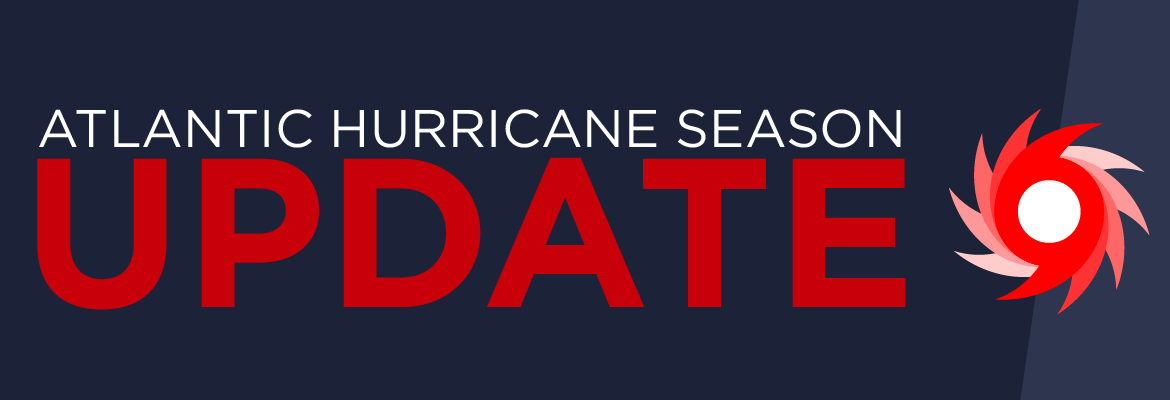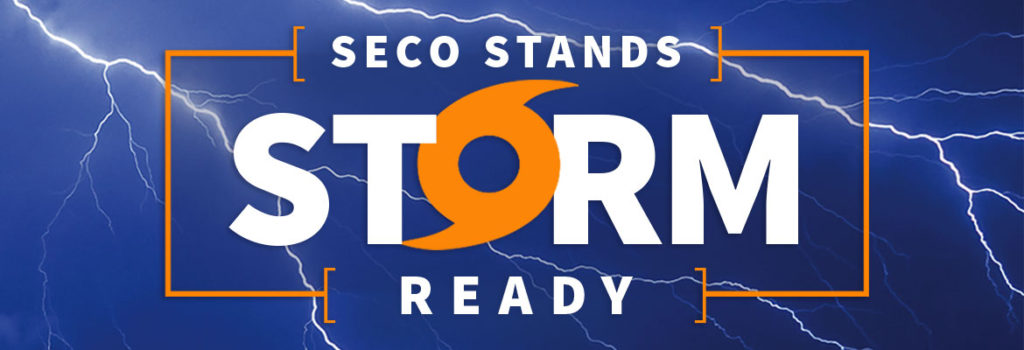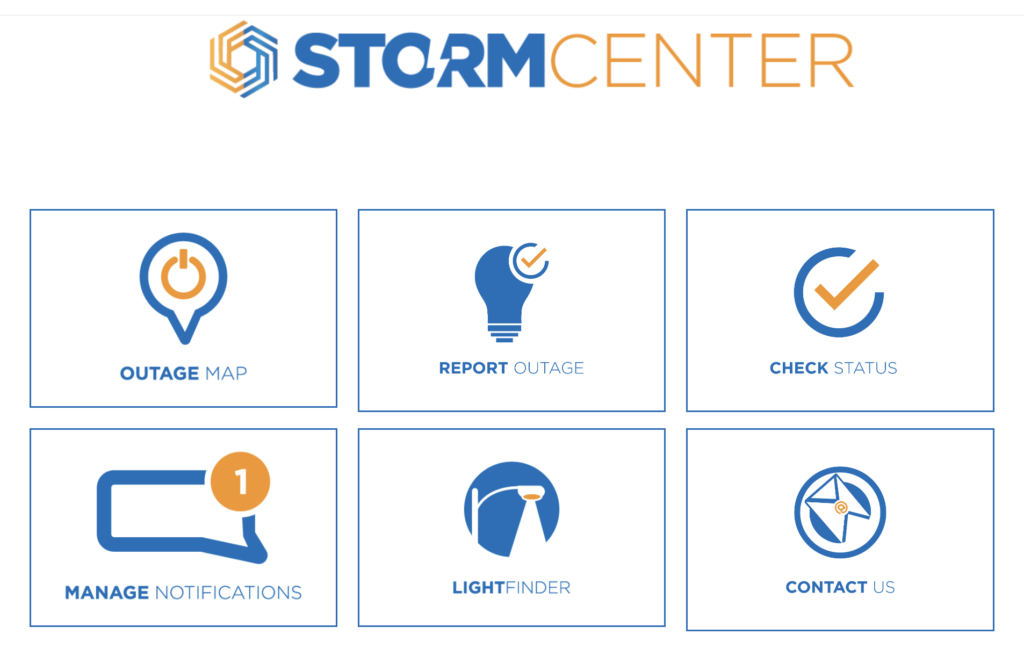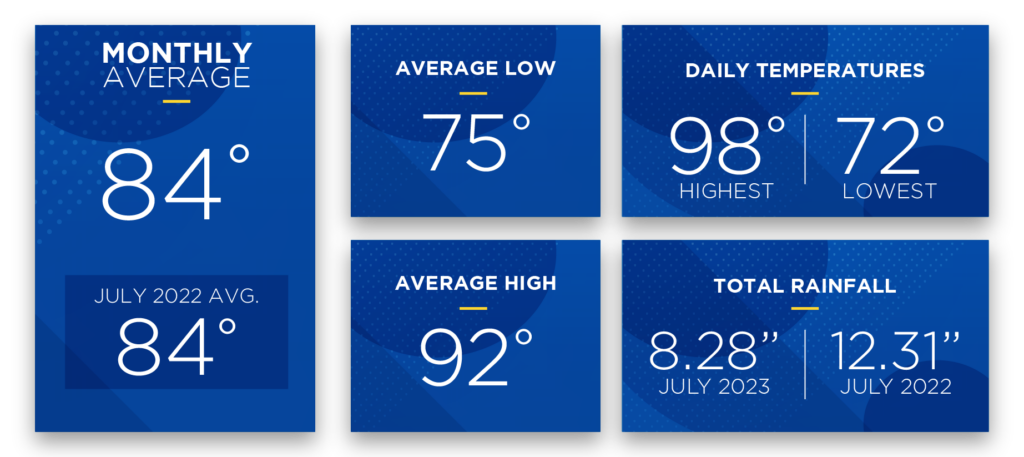August 2023 Sunshine State Stats
In August 2023, the average high and low temperatures rose slightly from July’s figures. The average high temperature rose 2 degrees, to 94, and the average low inched 1 degree higher than July, settling at 76 degrees. Rainfall reported from Leesburg International Airport (KLEE) decreased significantly from the month prior.
Central Florida escaped much of Hurricane Idalia’s impact, which devastated coastal areas north of SECO Energy’s service territory. While measurable precipitation occurred on only 10 of 31 days, late afternoon thunderstorm activity maintained its presence throughout the month. August 2023 rainfall totaled 4.69 inches, 3.59 inches less than the total rainfall in July.
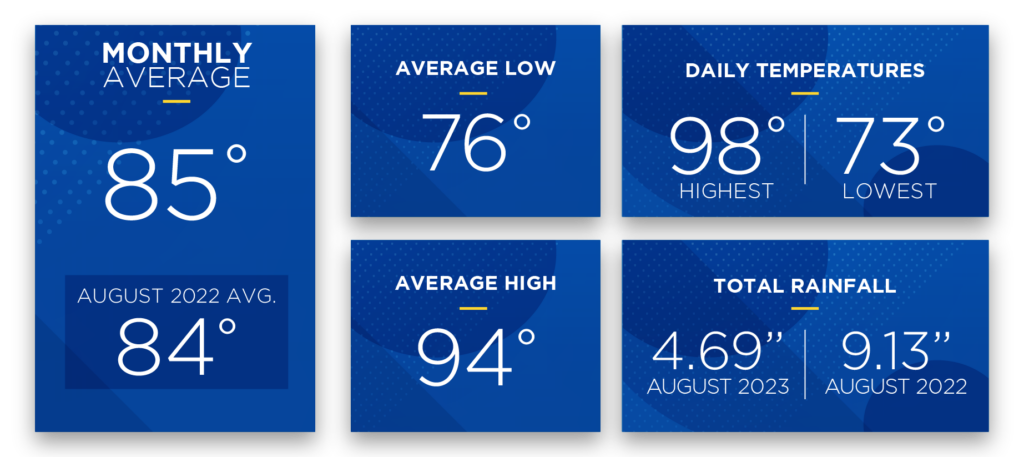
The average temperature for August 2023 was 85 degrees (1 degree higher than last month’s average), yet the daily high temps hit 90 degrees or above on all but one day. The highest daily recorded temperature (data from the Leesburg KLEE weather station) in August was 98 degrees and the lowest was 73 – matching the highest daily recorded temperature in July, and exceeding July’s lowest by 1 degree.
For most of August, the entire state of Florida was under heat advisories or excessive-heat warnings. As the heat index in many parts of Central Florida topped 110 degrees, on Sunday, August 13, SECO Energy recorded an instantaneous system peak of 984.3 megawatts at 5:00 p.m. This peak load shattered the previous record of 949 set in July 2023.
HVAC is the largest energy user in Central Florida homes, accounting for an average of 35 to 40% of kWh usage. This next month may be a good time to consider revisiting your thermostat settings to take advantage of savings opportunities presented by moderating temperatures. The energy-efficient thermostat setting during hotter months is 78 degrees and during colder months it is 68 degrees.
What are Cooling/Heating Degree Days?
Cooling Degree Day (CDD) scores represent the difference between the mean temperature for a given day (the high temp + the low temp, divided by 2) and 65 degrees. A positive number represents a Cooling Degree Day and the higher the number, the further the mean temperature was from 65 degrees. In colder months, there are days where the difference between the mean temperature and 65 degrees is a negative number. This represents a Heating Degree Day (HDD). In August, the monthly CDD score was 628. By contrast, the April 2023 CDD was 292, while there were no HDDs recorded.
September forecast from The Old Farmer’s Almanac:
The weather outlook for September 2023 indicates a monthly average temperature in the lower 80s with precipitation totals about 2 inches lower than average. Look for scattered showers and a few thunderstorms throughout the month with some noticeable periods of partly cloudy days mixed in.
The Atlantic hurricane season enters its final two months, and the updated storm predictions from Colorado State University suggest we may still experience an “above-normal season.” Read the details in the September SECO News.
Online Energy-Efficiency Tools
Log into SmartHub to view past bills and consumption charts to check historical usage. If your usage is high, SECO offers several energy-efficiency tools to help you identify energy wasters. Take the Home Energy Assessment to receive a detailed email tailored to your home’s features and lifestyle. The energy-saving advice will provide low-cost ways to decrease your usage – and your electric bill.
To easily calculate how much energy your appliances, lighting, electronic devices, and other energy-using items in your home consume, use the Energy Estimator.





 Dear Members,
Dear Members,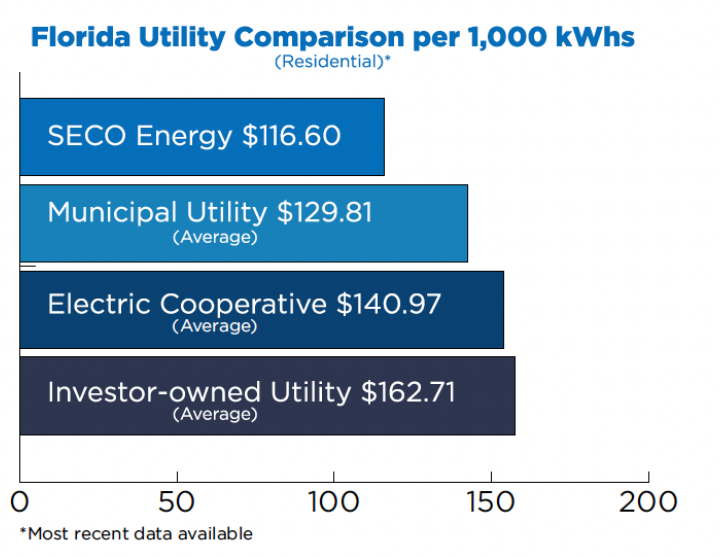 In alignment with Seminole’s projections, SECO’s Board of Trustees approved changing the PCA to lower our members’ bills. Both SECO and Seminole are not-for-profit cooperatives that work closely to ensure the lowest rates possible for our members. When the wholesale cost of purchased power decreases, SECO passes those savings along to you.
In alignment with Seminole’s projections, SECO’s Board of Trustees approved changing the PCA to lower our members’ bills. Both SECO and Seminole are not-for-profit cooperatives that work closely to ensure the lowest rates possible for our members. When the wholesale cost of purchased power decreases, SECO passes those savings along to you.